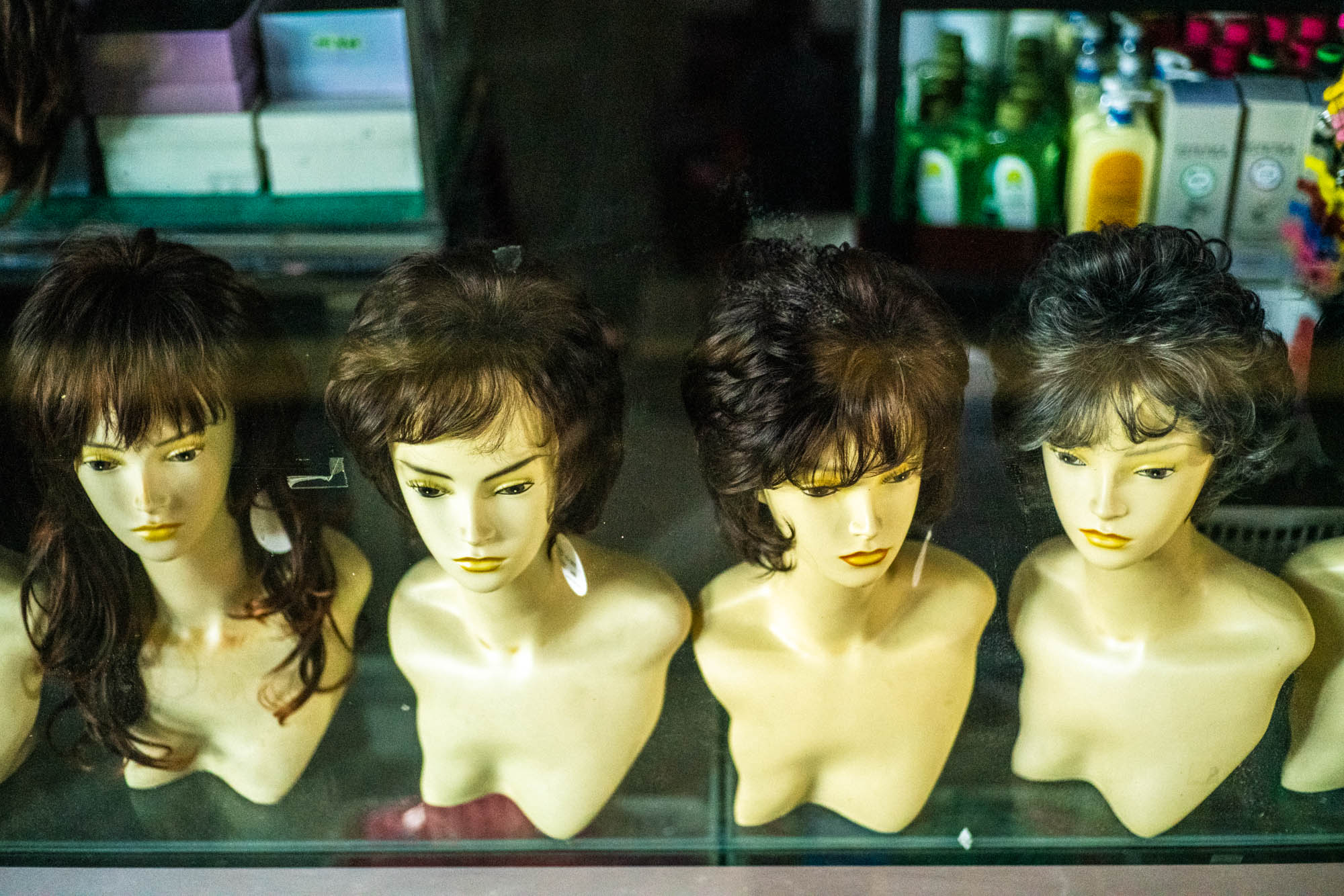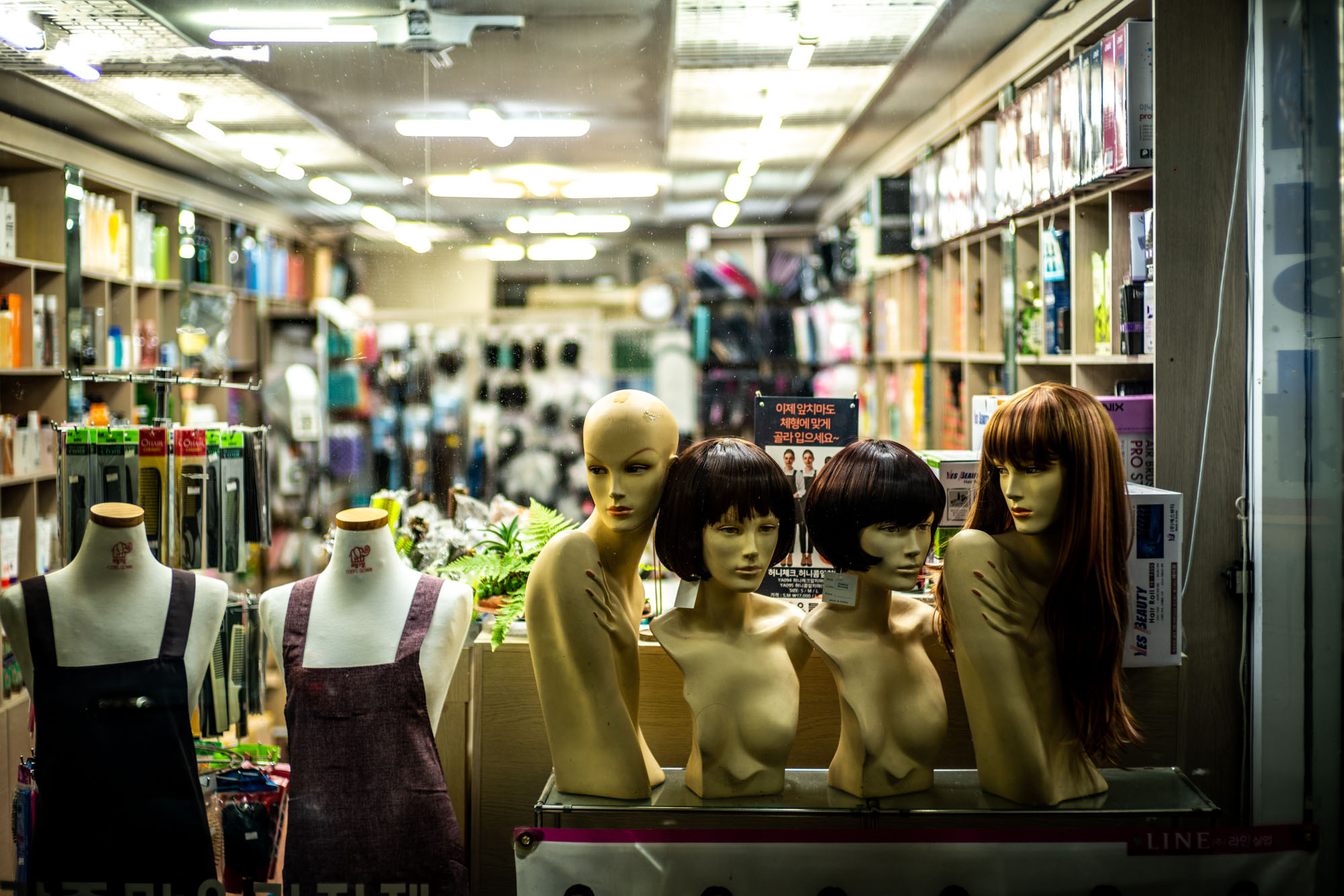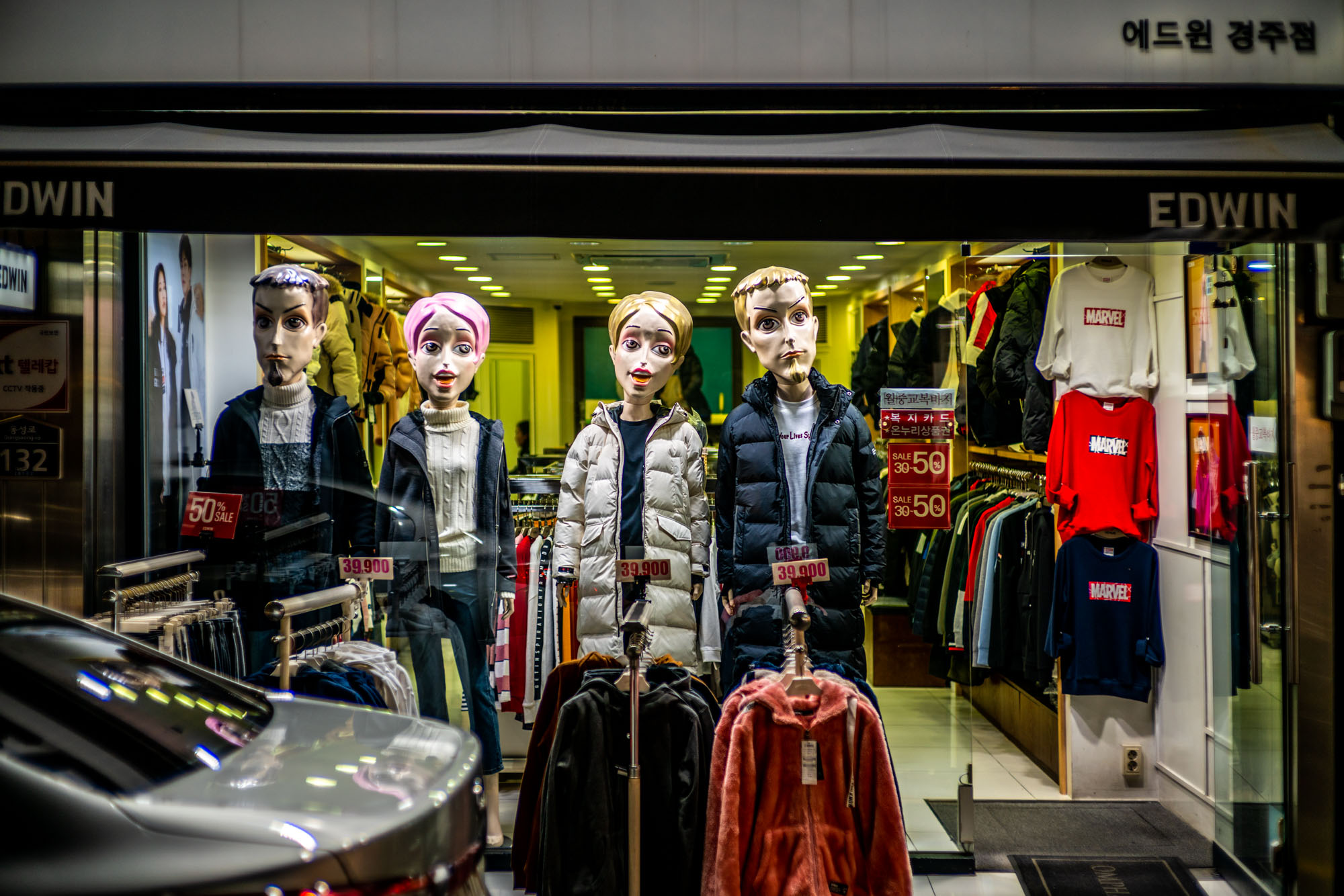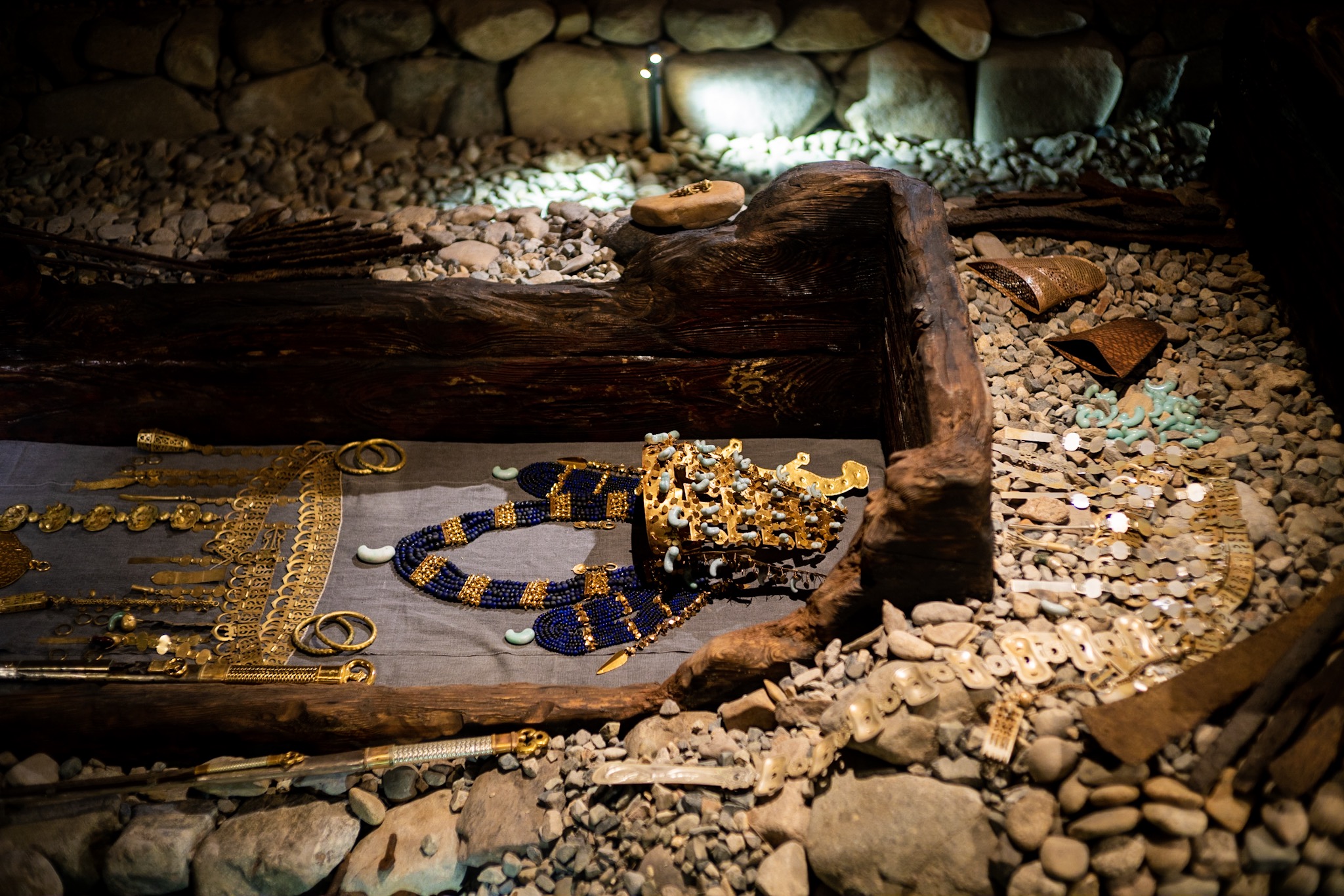Just like any Korean town, this covered market is part of Gyeongju’s central district. I learned a lot about the country visiting these markets, but mostly about Korean ideas of utilization of public space. Perhaps, one of these days, I’m going to post more about it.
It’s been a year since I moved to Korea—and, perhaps unsurprisingly, the place has changed me and my understanding of the world.
While the country has much to offer, 20th century’s occupations and its wars, as well as a rapid post-war growth haven’t been kind to preservation of its historical heritage. Most of Korea’s landmarks have been either leveled, burnt down, or built over—and the country’s current physical manifestations of its past have been invariably reconstructed with an eye towards Disney-esque national myth-building rather than historical accuracy.
I’m not sure when, or how it happened—it was gradual and initially went unnoticed—but this lack of physical historicity has steadily re-trained my eye to extract a sense of place from visual cues bordering on the banal and, at the same time, the less pretentious.
As much as Gyeongju might be a relative exception to that lack of historicity thanks to its unique archeological sites, it nevertheless remains a Korean provincial town with everything that comes along with it.
Evening, Gyeongju
Lately, I’ve been noticing that my gaze has been more frequently veering towards window shops. These intentionally public viewports often frame unintentionally intimate scenes. My mind is instantly flash-flooded with imaginary stories; it can’t help but attach meaning to these strangers’ faces. Here, for example, a man buys his much younger lover a new ring while tiptoeing around a minefield of expectations. Both his and hers, both about the expense and the secrecy of their arrangement.
Something about the man’s hunched back caught my eye. I imagine it got that way after years of arching his shoulders while consumed with whatever’s going on the computer screen in front of him. That combination of his obliviousness to what’s happening around him and what’s slowly been happening to him made me remember that all too often we’re not in control of how we change. Even if it seems obvious to the outsiders.
Ever since I first visited Egypt in 2008, mannequins have become an unexpected portal to the bizarre worlds of far-away places. There is something discomforting about them: while they attempt to be attractive, they more often than not come off as alien-like and detached. And more often than not, they give you a peak at their owner’s tastes / personal history.
I rarely photograph young people in Korea. I think that I’m just as confused about who they are, where they stand, and what they want as they are themselves.
… moreover, it is rare to see them doing something interesting on the streets. The sad-but-true cliché is that they’re always hunched over their phones, eating, or commuting. Often all three at the same time.
I don’t have the slightest idea about the kind of an establishment one can find at the end of this underground staircase. If I weren’t in a hurry, I’d have entered. Alas, the only thing to be said about this is: it’s green and shapely.
The Royal Tombs of Silla
Gyeongju is famous fo its historical significance on the Korean peninsula. It was the capital of Unified Silla, a Buddhist kingdom famed for it culture and arts. As usual, not much remains of the old—most buildings from any era in this part of the world were built of wood. But, compared to the rest of the country, there is more of a… connection to the past be found here. And yes, I’m aware how new age-y it sounds.
This little hill here is actually part of Gyeongju’s many Silla Dynasty tumuli—royal tombs from between 7th and 10th centuries CE. What caught my eye most of all were the trees growing on their sides. Odd, many leaning, rarely vertical. As if gravity didn’t inform them about which direction is up. In person, the effect is a bit other-worldly, alien-like.
Thinking about what was lost in Korea, this time before all the catastrophes of the 20th century, my mind lands on repression of Buddhism by the Joseon Dynasty. It makes me wonder what would’ve been without it, or without the zealous destruction of Buddhist heritage by the post-Silla rulers.
Unified Silla was, in many respects, the peak of peninsula’s art creation. These tumuli weren’t disturbed for centuries, all until the post-war excavations that took place all over the country in 1970s. They contained many of the treasures seen in Korea’s museums these days.
And some of them have never been opened at all.
As much as I love the beautiful artifacts from that period, I thought it pointless to photograph all their plasticky replicas contained inside the tombs themselves. Suffice it to say, the originals are spectacular and can be found in various museums of Korea.
Day, Bulguksa Temple
Visiting traditional Korean buidlings—be it Buddhist temples, Confucian schools, or royal palaces of Seoul—is often an exercise in confusion and often frustration to a person genuinely trying to figure out what they’re looking at.
Most guides tell you that this or that edifice was built many many centuries ago. In reality though, most were rebuilt from scratch (and sometimes from memory) in the 1960s and later.
Bulguksa, an admittedly beautiful Buddhist temple, dates its origins back to 8th century. However, the only truly original parts remaining from that period are the stone structures—the stairs, bridges, and the pagodas.
Bulguksa Temple in 1914. (via Wiki).
Everything else was re-built in the 1970s—and I’m afraid, improved. In contrast to the royal palaces of Seoul however, as is the theme of this post, the temple is a relative exception to that feeling of physical a-historicity in Korea.
Air, Fall, Seokguram Buddha
There was a point last fall, just a few months after I’ve arrived to Korea, where Seoul was blanketed in an asphyxiating smog that lasted for weeks. Koreans usually like to blame China for this problem—and while partially true that the prevailing winds blow a lot of pollution to the peninsula—to boot, the problem is a home-made phenomenon. This year is not different.
That’s why getting out of Seoul for a weekend has the added benefit of… being reminded of what air smells like. And it smelled like frosty pine forrest in fall colors.
Since photographing in the Seokguram Grotto is not allowed, here’s a capture from Wiki taken by someone who had the balls to face the silk-voiced monk guarding the statue. (Via Wiki).
The photo. Doesn’t. Do. It. Justice.
The Buddha is breathtakingly beautiful, elegant, serene.
And it’s not about my orientalizing gaze. It’s like seeing Davide in Firenze for the first time.
Roberto.
Back in Gyeongju
The tumuli





